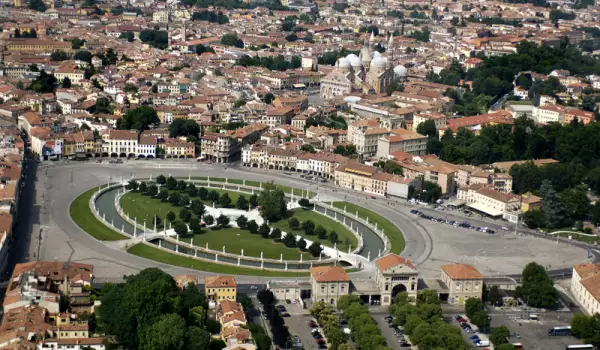Padua

Padua (it. Padova) is 40 km west of Venice in Italy. It is the administrative center of the province, which is located in the Veneto. The River Bakilione crosses through Padua.
The town is among the cultural centers of Italy, and in more recent history is also known as an important industrial region. Padua is situated on an area of 92 square kilometers, and has a population of more than 200 000 people.

Padua is considered a pilgrimage city, because millions of believers come here each year to enter the Basilica of Sant Antonio, where the tomb of the saint himself is. The body of the deceased on June 13th, 1231, Brother Anthony was buried in the little church of Santa Maria Mater Domini. After being canonised on May 30th, 1232 by Pope Gregory IX Franciscan the monks decided to build very close to the church of Santa Maria Mater Domini a new church.
Thus in 1232 began the construction of the Basilica of San Antonio. Construction lasted 80 years as the work was delayed by the difficult political conditions and scarce funding. The new construction was given a boost by Pope Alexander IV, who issued a special pardon and any help to the completion of the basilica. The papal indulgence lasted for 6 years and on 8th April 1263 the remains of St. Anthony were moved into the third dome of the new church.
The chapel, which are the remains of San Antonio is the work of many different artists. Among them are Sansovino and Falcon. Interesting is the horse statue of General Gatamelata Venetian (Erasmo da Narni), which was made by Donatello. The Basilica itself is a Catholic church, which is one of the most important in Italy. Basilica can not but represent a huge artistic value.

The common view of Padua is that it is an amazing combination of arcade streets, beautiful architectural masterpieces and many picturesque bridges over the twisted branches of the river Bakilione. Sometimes it is called Padua city of Giotto, because here lies the largest collection of works by this master of the brush.
Among the many attractions of the city is the Cappella degli Scrovegni. It is believed that it was painted in one of the most remarkable cycles of frescoes. Wall engravings were completed in 1305 by Giotto himself, and they all imitate various scenes from the life of the Virgin Mary. It is alleged that this was one of the most interesting cycles of frescoes in the world.
Palazzo della Ragione is another landmark of Padua . The construction of the palace is unique because it possesses the biggest unprotected roof with columns across Europe. The walls of the palace are covered with allegorical frescoes. On the beautiful Plaza de la Valle Prato you can see more than seventy statues. Padua is the second after that of Bologna on the "old" university, founded in 1222 which once had once taught the great Galileo Galilei.
Padua had built the first botanical garden in the world. It was founded in 1545, and still approaches its original appearance. Plants are arranged in an oval shape, which is the symbol of the world, while it passes along the water channel. The original objective of the botanical garden with its construction was to source the arena of research. The garden remained loyal to its original purpose and still is a source of research. In 1997 the garden was included in the list of World Heritage by UNESCO.






